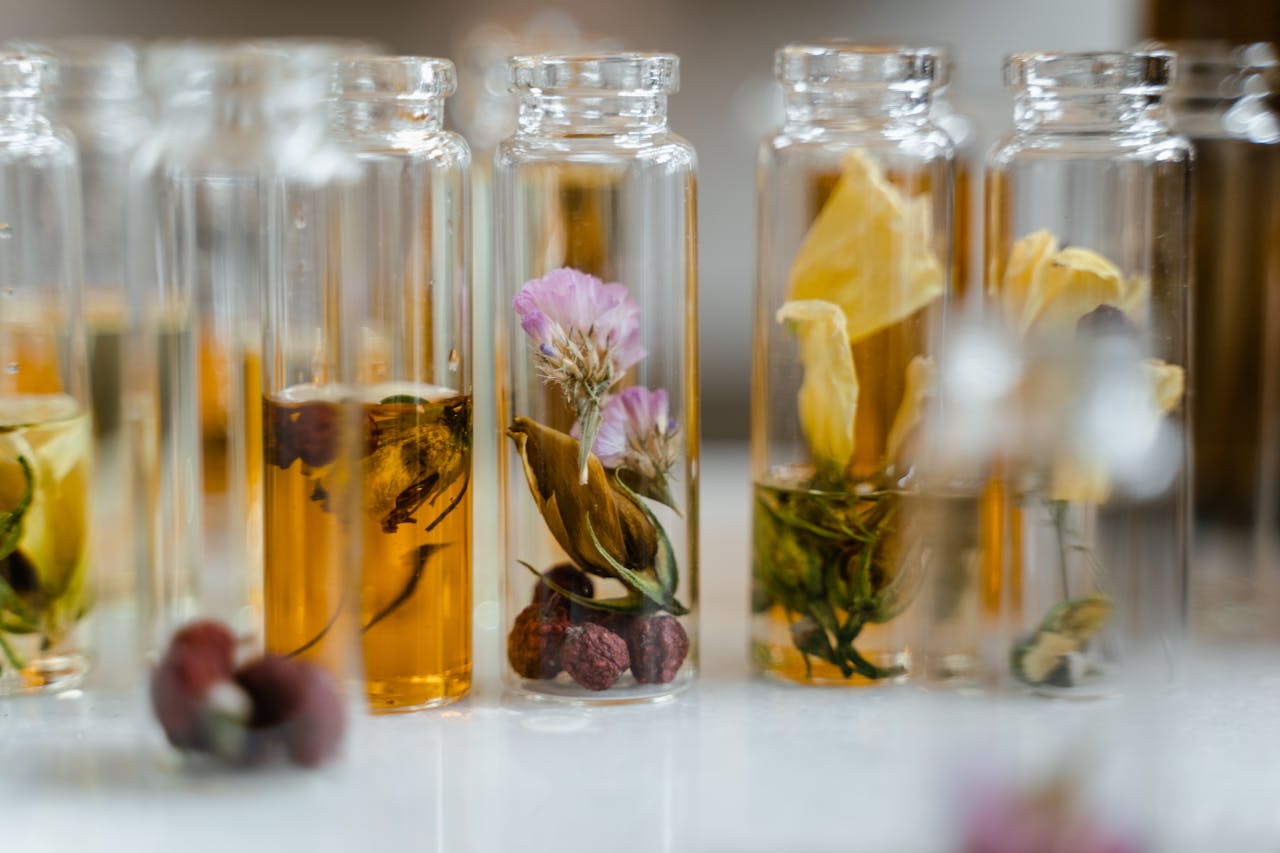
16 June 2025 10:45
🌿 A Deep Dive into Trends, Processes & Market Evolution
In a world that’s moving fast, wellness is slowing down — and essential oils are right at the center of that shift.
They’ve been around for centuries, cherished for their scents and healing power. But in 2025, essential oils are no longer just traditional remedies — they’re modern tools in advanced formulations, beauty routines, emotional therapy, and even digital customization.
Let’s unpack where this ancient treasure is heading in today’s innovation-driven world.
🧘♀️ 1. Aromatic Roots: Nature’s Oldest Wellness Tool
From Egyptian rituals and Greek baths to Ayurvedic massages, essential oils have a long and fragrant past. Extracted from plants, leaves, roots, or flowers, they’ve been used to calm nerves, heal wounds, and purify the air.
But what makes them still relevant in 2025?
➡️ Their holistic nature.
➡️ Their multifunctionality (aromatherapy, skincare, haircare, emotional well-being).
➡️ The consumer’s return to natural, sensory experiences.
In an age of synthetic overload, their authenticity feels luxurious.
🔬 2. Science Meets Scent: Validating What Ancient Cultures Already Knew
While essential oils were once only associated with wellness boutiques and spas, today they’re lab-tested, peer-reviewed, and included in formulas developed by chemists.
Here’s what modern science confirms:
- Lavender, bergamot, and frankincense help reduce cortisol and anxiety.
- Tea tree and eucalyptus show antimicrobial and antifungal properties.
- Peppermint oil may boost mental alertness and relieve migraines.
- Chamomile and rose oils soothe irritated skin and improve sleep quality.
The oils aren’t just soothing anymore — they’re clinically effective, and consumers are paying attention.
📈 3. Trend Watch: What’s New in 2025?
Essential oils are being reimagined in exciting ways. Let’s look at some key trends:
💧 3.1. Water-Soluble & Hydrosol-Based Innovations
Traditional essential oils are oil-based, which limits their use in some formulations. In 2025, hydrosols (floral waters) and nano-emulsified oils are gaining popularity — they’re gentler, more compatible with water-based products, and ideal for sensitive skin.
🌐 3.2. AI-Driven Personalization
Imagine scanning your mood and receiving a tailored blend via a wellness app. With AI, emotional profiling + essential oils = custom wellness. Brands are starting to offer:
- Personalized aroma roll-ons
- Custom diffuser blends
- Subscription boxes tailored to your monthly mood or sleep cycle
♻️ 3.3. Sustainable & Ethical Sourcing
Consumers now ask: Where was this lavender grown? Was this sandalwood ethically harvested?
In 2025, transparency is currency. Labels now include:
- Origin maps
- Harvest dates
- Certifications (organic, cruelty-free, wild-harvested)
Sustainable packaging (biodegradable capsules, recyclable glass) also aligns with eco-conscious buying habits.
🧠 3.4. Neuroscent & Aromachology Boom
More brands are investing in neuroscents — fragrances proven to influence mood and brain waves. Essential oils like ylang-ylang, clary sage, and neroli are at the heart of this movement, integrated into perfumes, room sprays, and even car diffusers that trigger focus or calm.
⚗️ 4. Extraction & Formulation: A Craft Meets Chemistry
The beauty of essential oils lies in their complexity. But how they’re extracted defines their potency and quality. Here's a breakdown:
- Steam Distillation: Most common, preserves aroma but sensitive to heat
- Cold Pressing: Ideal for citrus oils, keeps freshness intact
- Supercritical CO₂ Extraction: High-tech, retains full aromatic profile, no heat damage
- Enfleurage (traditional method): Rare but luxurious — uses fats to capture aroma over time
In 2025, brands are prioritizing low-impact, solvent-free methods to preserve bioactives while being planet-friendly.
Meanwhile, formulators pair essential oils with encapsulated delivery systems or slow-release carriers, making them longer-lasting and more effective — even in serums, sprays, or candles.
🌍 5. Global Market Momentum
According to recent forecasts, the essential oils market is expected to reach $18 billion+ by 2027, with wellness, beauty, and personal care as major drivers.
Leading categories:
- Aromatherapy & mental wellness
- Natural perfumes and candles
- Hair oils & scalp care
- Clean skincare formulations
The most in-demand oils in 2025:
- Lavender (as always)
- Peppermint
- Eucalyptus
- Geranium
- Sandalwood (ethical sourcing required!)
Regions like India, France, and Australia remain key players in both production and innovation.
✅ Conclusion: Essential Oils, Evolved
Essential oils are not just fragrances in a bottle anymore.
They are:
- Intelligent ingredients
- Emotion-enhancing tools
- Pillars of natural beauty and wellness
In 2025, the essential oil movement is more transparent, personalized, ethical, and science-backed than ever before.
And whether you're a brand, a formulator, or simply a consumer — essential oils are a scented bridge between tradition and transformation.